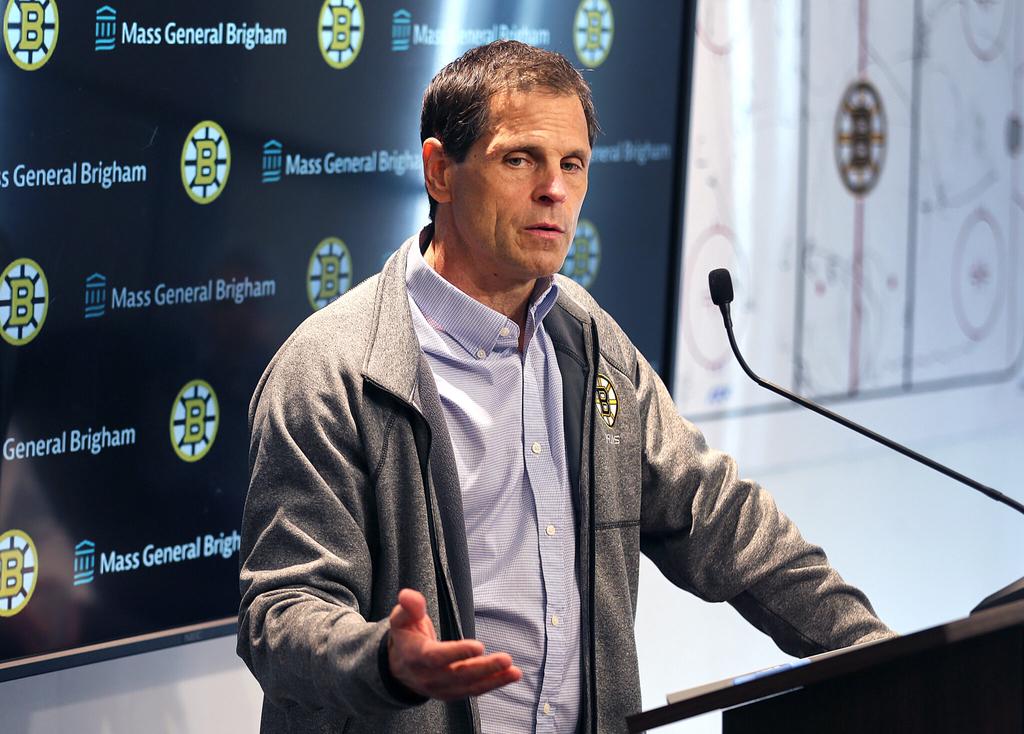The way the Boston Bruins approach this offseason is going to be very polarizing.

For a team that made the best of a not-so-great situation last season, earning 109 points and a second-round playoff bid, the holes on the Bruins are very evident. With the salary cap jumping from $83.5 million to $88 million, the Bruins will have over $20 million to spend this offseason. That total doesn’t factor in any of the team’s current free agents signing new deals, including Jeremy Swayman, Jake DeBrusk, Danton Heinen, Matt Grzelcyk, Pat Maroon, and others.

While there will undoubtedly be turnover from the 2023-24 roster to the 2024-25 roster, it’s unclear which free agents the team will bring back and which will ultimately find a new home this offseason. On paper, it would make sense for the Bruins to bring back Swayman, Heinen, and DeBrusk, while players like Grzelcyk, Derek Forbort, and others will likely sign elsewhere. Maroon has made it known that he’d like to return to Boston, but his contract will ultimately be a non-factor either way.
The more than $20 million in cap space also doesn’t account for the Bruins’ biggest needs, including but not limited to, a legitimate No. 1 center, a scoring winger, and some depth on defense. It also doesn’t consider the possibility of the Bruins moving on from Linus Ullmark, giving them an additional $5 million to play with this summer.
The Bruins have money, but with so many holes and a few internal players who could eat up some of the cap space, the team must be crafty with how they approach their spending. The expectations in the city of Boston will always be high; pressure from the fans and media means that lengthy rebuilds aren’t popular. At the same time, the Bruins have shown that they can remain competitive while building the roster, as seen during this transition season. Because of this, the Bruins have to consider who they’re signing this offseason and whether they’re worth the cap space in the long run.
Bruins Need to Avoid Overpaying for Consolation Prizes
While there may be enticing players like Elias Lindholm and Jake Guentzel on the market, their expected contracts this offseason may be too rich for the Bruins, who need legitimate long-term ceiling-movers. Lindholm struggled last season but has proven in the past that he can be a legitimate scoring threat with strong two-way and faceoff ability. Guentzel is a consistent scoring winger who would make a major impact for the Bruins who are in dire need of consistent offense outside of David Pastrnak. On the flip side, a scoring winger is a priority, but a top center is always more important.
This is why signing Guentzel, who is also set to turn 30 years old next season, may not be a risk worth taking. As for Lindholm, who will also turn 30 next season, the Bruins need a clear-cut No. 1 and Lindholm is coming off of a down season. Giving out a long-term, big-money deal to a player who may have already shown signs of slowing down just sounds like a recipe for disaster. These are just two of the big names available on the market, but the logic must be followed for any other player available as the Bruins look to make moves this offseason.
Still, the Bruins need to upgrade their center position one way or another.
Whether that comes in the form of a trade or by waiting a season for a player like Leon Draisaitl is anybody’s guess. Unfortunately, trading for a star player isn’t an easy option. Even more, hoping for a player like Draisaitl to not only become available, but also have mutual interest in playing for the Bruins may be too much to bargain on considering it would entail the Bruins not significantly upgrading their center position this season for a mere chance at a star next year.
Still, the Bruins shouldn’t be looking to settle this offseason. The roster transition has started, and the centennial season is behind them. Management’s goal shouldn’t be a short-sighted one, focused on merely patching the team and icing a roster capable of making the playoffs and winning a round or two. Instead, the goal should be long-term: building a team with a real chance to win the Stanley Cup. This, of course, is easier said than done.
It would be disingenuous to say that teams should never overspend on a player when 31 other possible teams are bidding for the same player’s services. It’s also important to remember that a No. 1 center is potentially the most important position in hockey and these players don’t come available every day. Because of this, waiting for the perfect option could prove futile. The draft is typically how these players are found and they hardly ever find themselves available on the open market. Trading for them is another option, but this becomes costly given how important they are to a lineup.
For a team like the Bruins who severely lack draft capital in the early stages of the 2024 and 2025 NHL Entry Drafts, this could prove to be an issue. An issue that unfortunately may have the Bruins considering players who will likely cost more than they’re comfortable paying, who may not necessarily check off all the boxes they need.
There’s no exact science to creating a Stanley Cup contender and though the Bruins have cap space and options, they must be cautious with how they approach the offseason. The long-term ramifications could be significant, especially if they pin themselves into a corner by spending on a consolation prize.














